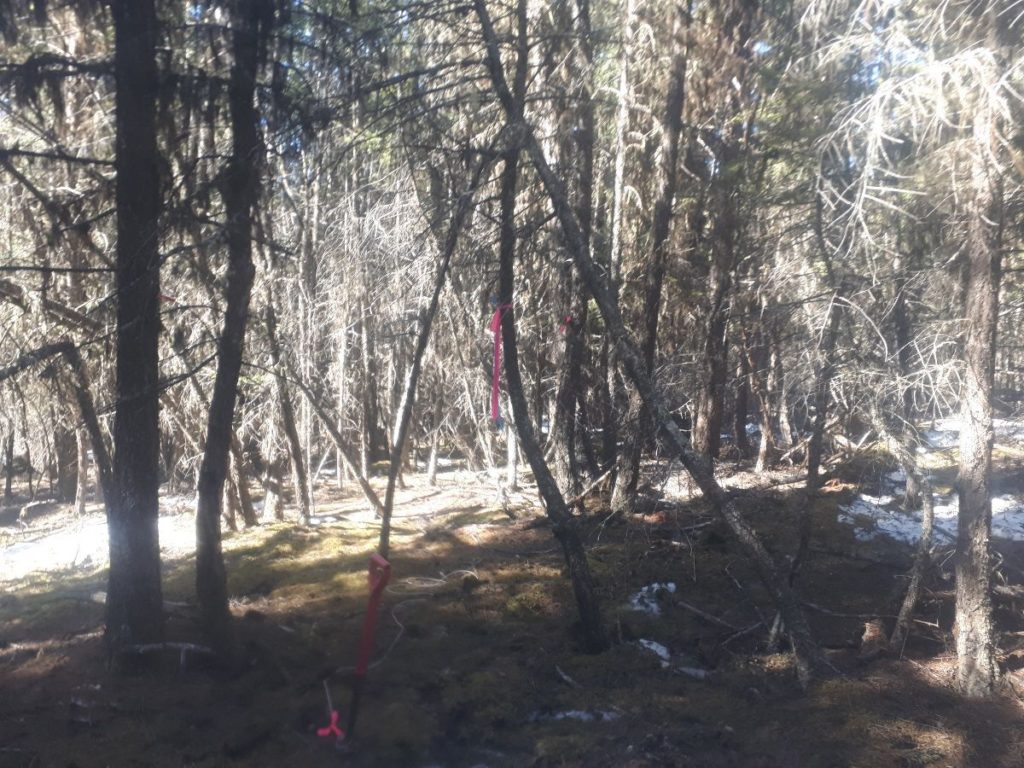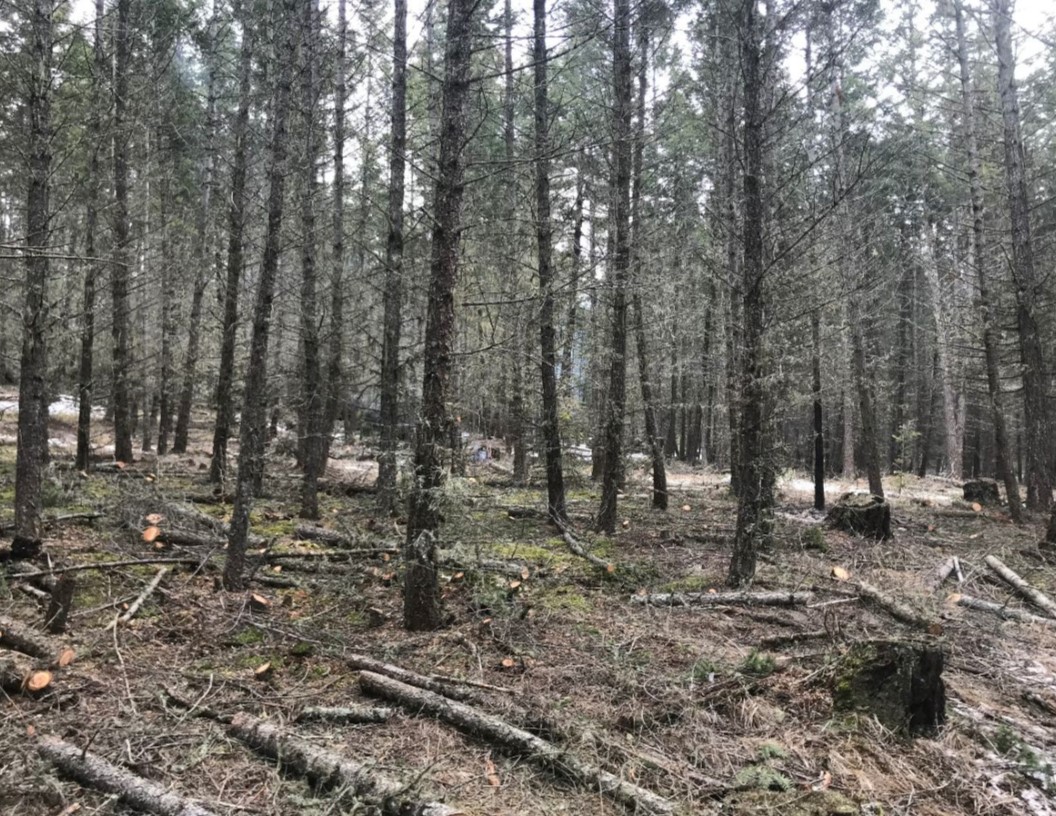Picture above: Typical stand post treatment. Treatments of the stands have been completed in 2018/2019 by local First Nations crews.
The Williams Lake Community Forest (WLCF) is situated in two separate geographic areas around the City of Williams Lake covering a total of 288 square kilometres. As a 50/50 partnership between the Williams Lake Indian Band and the City of Williams Lake, the community forest is a vital resource having contributed both financial support as well as employment opportunities into the communities since 2014. Work to protect this asset from wildfire while enhancing Mule Deer Winter Range attributes through a project funded by the Forest Enhancement Society of B.C. (FESBC) is ongoing.
“This project is critical to our community forest,” said Kent Watson of C+P Management Ltd., the company that manages the WLCF. “The southwest portion of our project, known as Flatrock or Ne Sextine, is situated west of the City of Williams Lake between Williams Creek Valley and Highway 20. The area is within Mule Deer winter range and a Wildland Urban Interface behind the residential areas on Birch Lane and Woodland Drive. The funding provided us with an opportunity to achieve many positive outcomes such as enhancing habitat for
wildlife and reducing wildfire risk to our communities.”
Through the historic harvest history of the area and with current harvest restrictions, much of the project site was occupied by moderate to high density stands, high risks for wildfires. The area is often impacted by snow, ice damage, and Spruce budworm and the stand itself has been suppressed with trees of small diameter which has led to an environment limiting forage opportunities for wildlife.
“Through this funding, we identified over 60 hectares of treatment areas and completed the density reduction work while lowering the fuel loading and fire hazard rating for these areas,” said Watson. In general, targeted stands for treatment were selected based on small diameter fir overstorey with suppressed
and damaged understorey stems.
Typical stand condition prior to treatment.
Post-treatment stands are primarily layer 1 stems in smaller diameter classes. No live stems greater than 12.5cm DBH stems were removed.

“There have been several FESBC funded projects undertaken by the Community Forest and this current hand treatment project fills in the gaps between earlier machine work. All these projects have seen good outcomes,” said Dave Conly, Operations Manager with FESBC. “They align with all five of our Society’s purposes of wildfire risk reduction, wildlife habitat enhancement, rehabilitation of low value stands, recovery of fibre, and opportunity to attain carbon benefits. The work of Kent and his team has helped to further protect important infrastructure and community assets while contributing social, environmental, and economic benefits to the area.”
The work in the chainsaw treatment (hand treatment) area has reduced understorey densities and piling the non-merchantable debris. The crews removed the debris through burning and work is being completed by local First Nations crews, with the overall project projected to be completed for Fall/Winter 2019.
“In total, FESBC has provided grants up to $3,346,000 for WLCF projects,” said Watson. “These funds are a catalyst for our community forest to get projects in motion. We are grateful for these opportunities and their partnership.”
For information on/or an interview with FESBC
Aleece Laird, Communications FESBC
communications@fesbc.ca | 250.574.0221







